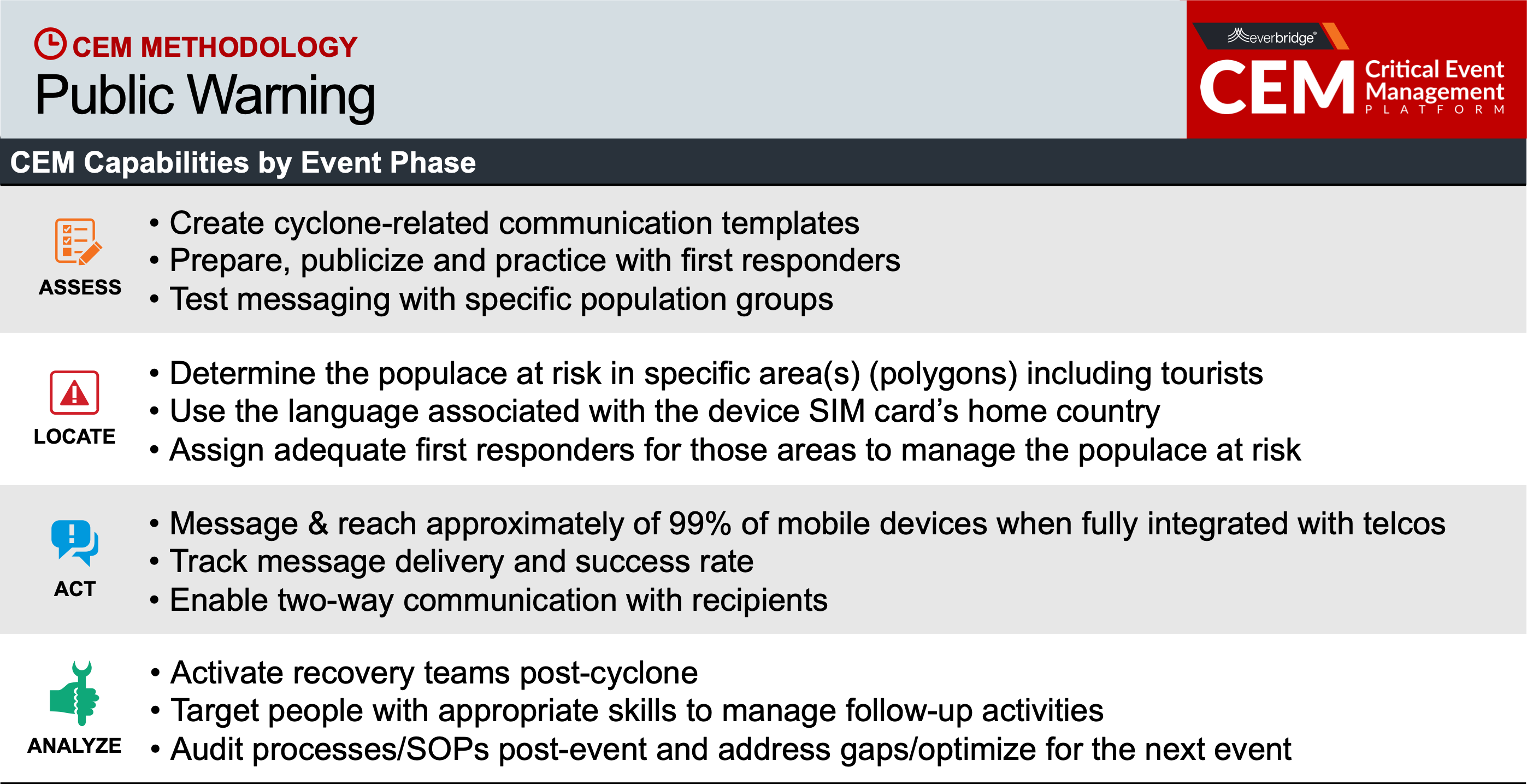Public Warning
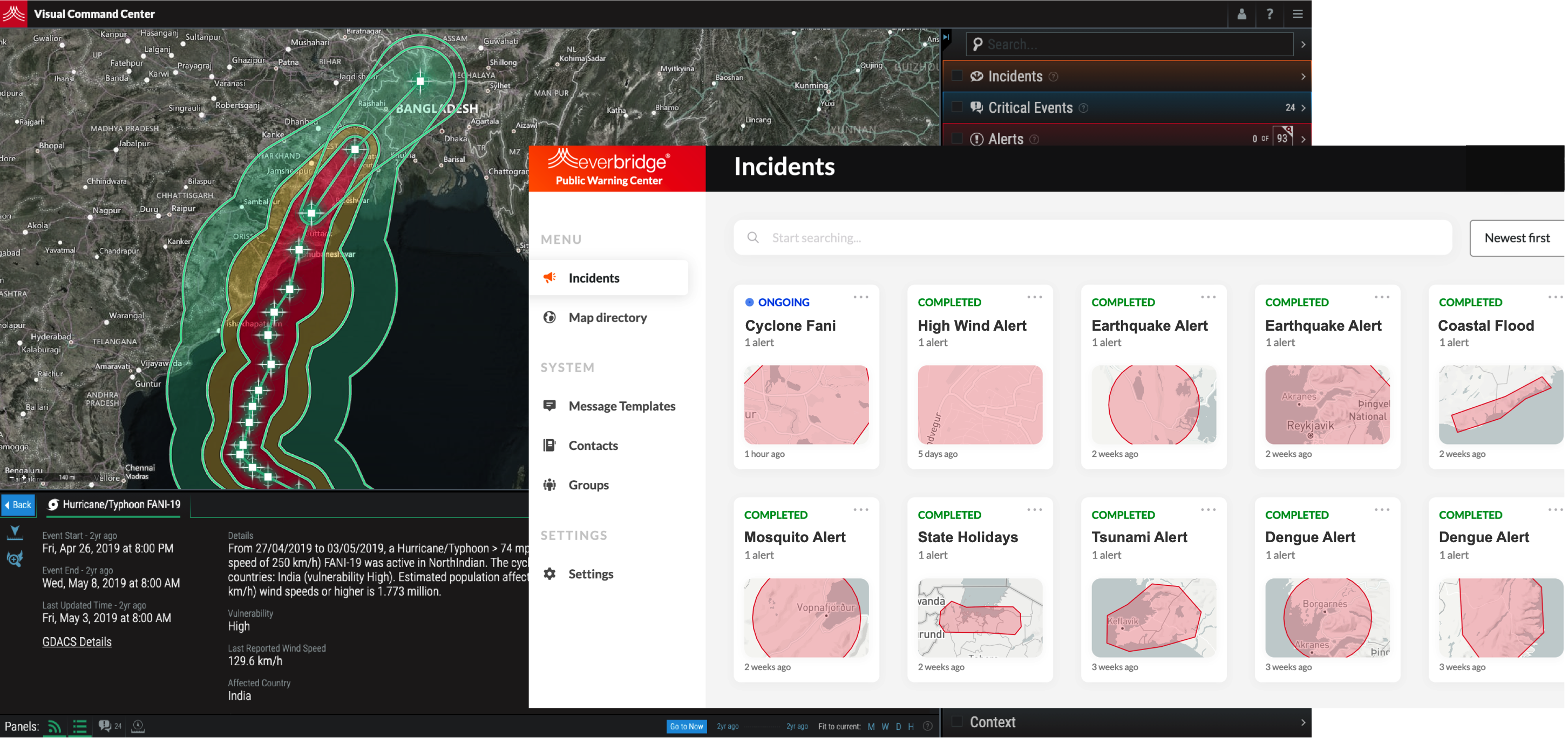
In 1999, a cyclone struck the Indian state of Odisha, killing nearly 10,000 people. To prevent future loss of life, Odisha established an Emergency Warning Dissemination System built on Everbridge Public Warning platform. When Cyclone Fani targeted India in April 2019, Odisha was better prepared.
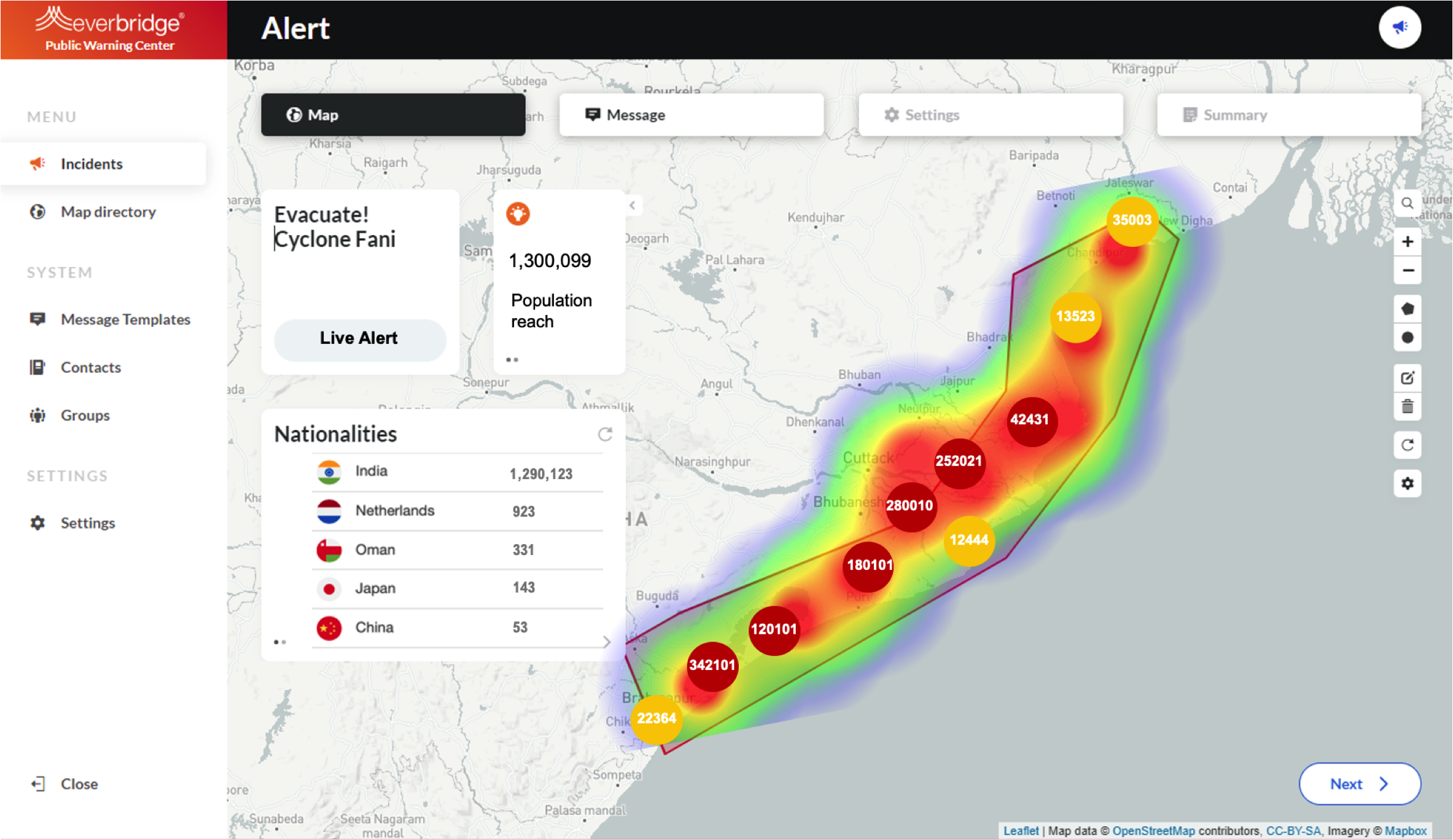
The Odisha State Emergency Operations Center used Everbridge for the public warning process. Everbridge can integrate with telecom companies, so you can see all mobile devices, density and origin countries without requiring subscribers to “opt in” for alerts.
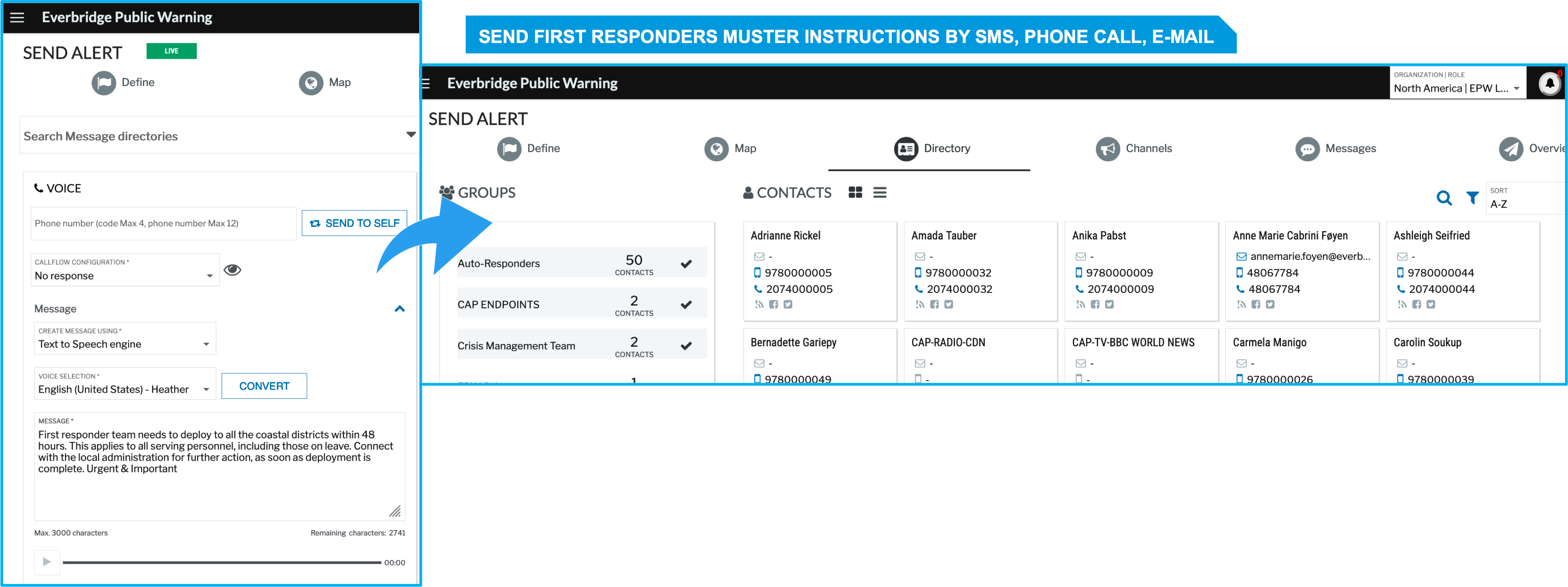
Operators first notify officials to organize the evacuation. This triggers advance planning activities like opening evacuation centers, deploying more first responders and responders to help evacuate high population areas, such as sending English-speaking personnel to tourist areas.
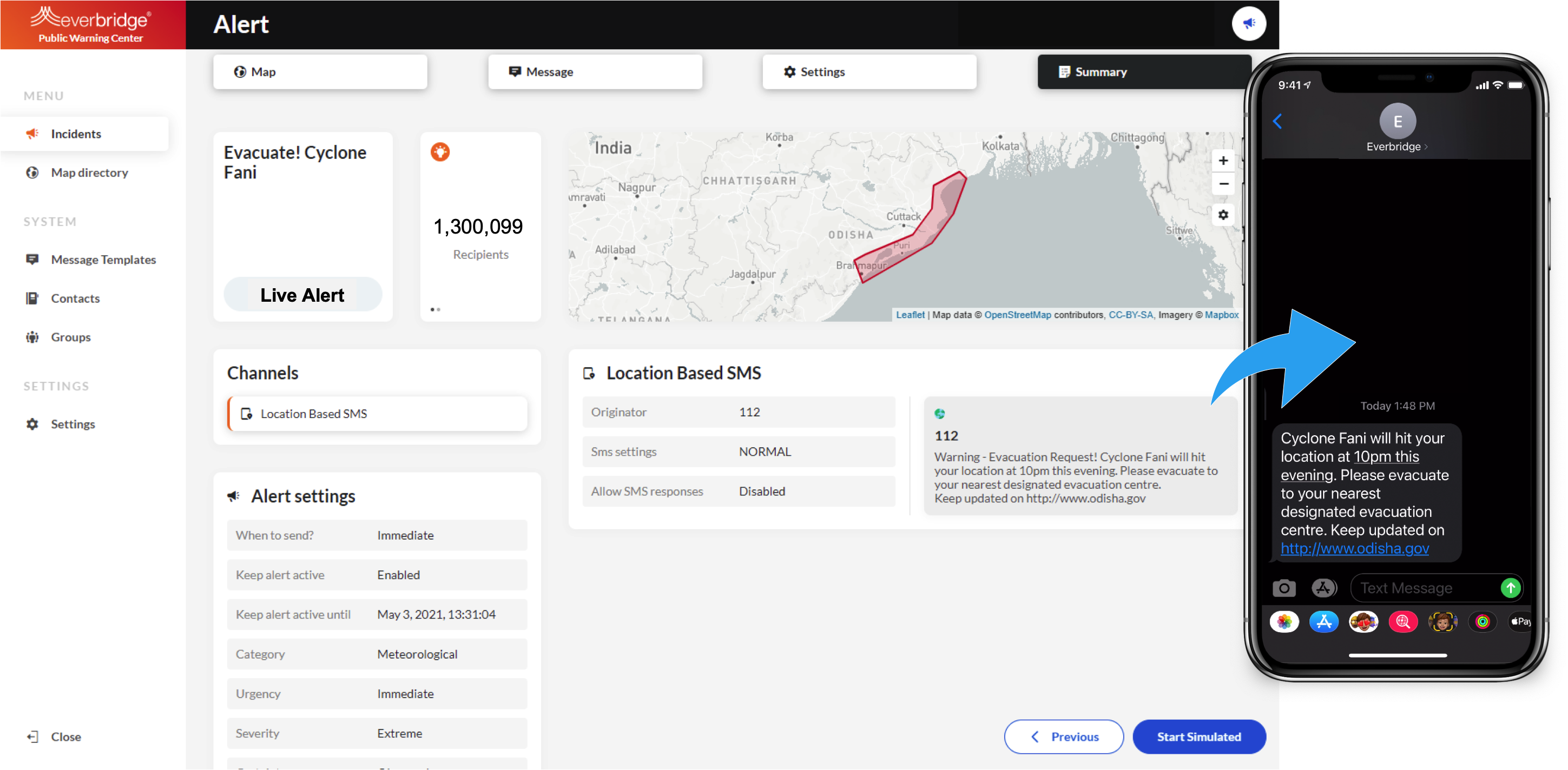
With your first responders ready for evacuation, you can send out SMS alerts to the general public in designated coastal areas. Odisha sent 2.6 million alert messages while also using television broadcasts, sirens and public-address systems to communicate evacuation procedures.
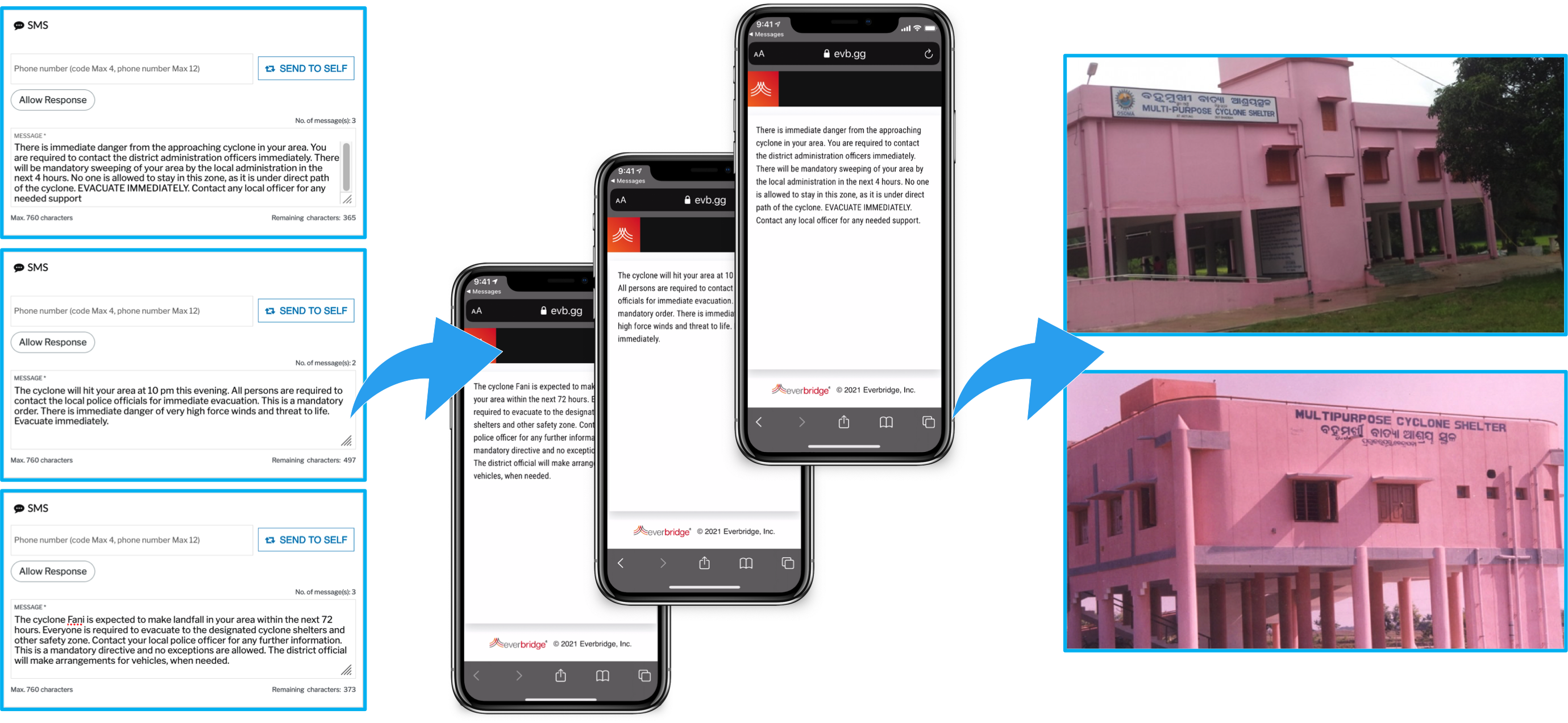
As the storm gets closer, you can conduct multiple message campaigns to reinforce the need to evacuate. Police and first responders on the ground can then aid evacuees. Odisha’s campaigns helped them shelter 1.2M people from endangered coastal areas prior to landfall.
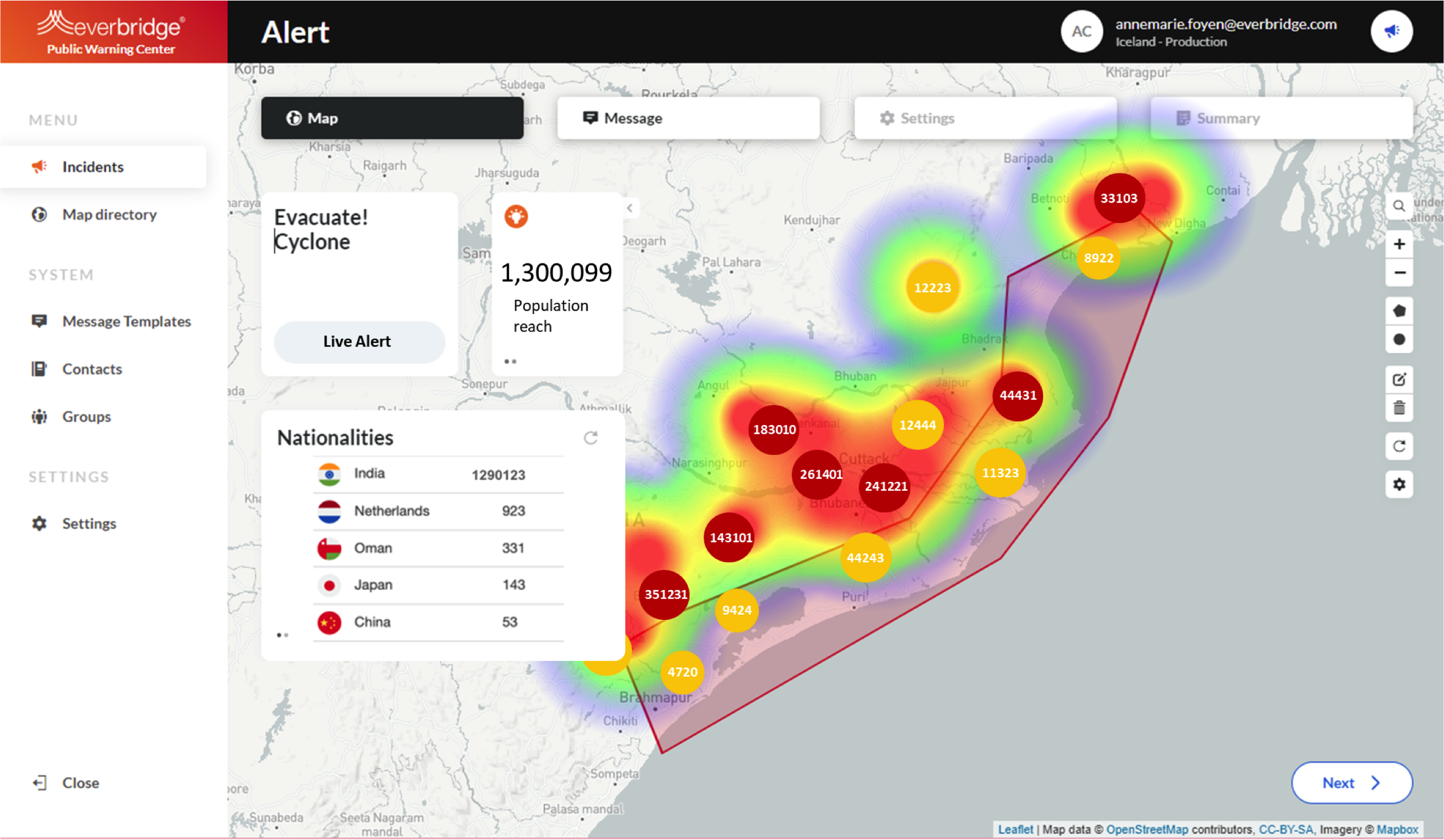
You can monitor the evacuation in real-time and see the impact of evacuation warnings as people congregate at shelters and move inland. This data helps you identify bottlenecks in the evacuation process and focus precious resources where they are needed most.
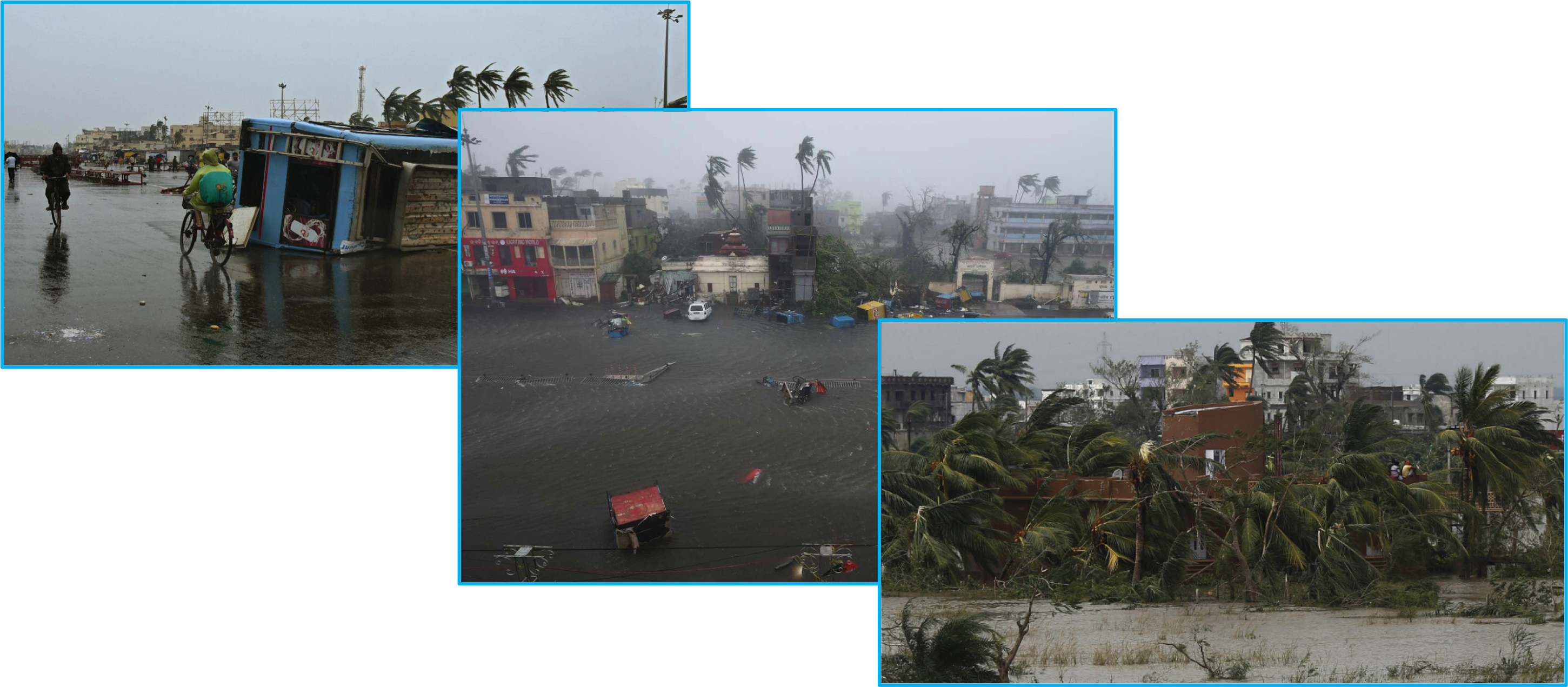
Fani made landfall near Puri, Odisha as a severe cyclone. The storm caused extensive damage to property and infrastructure, but because Odisha was able to evacuate so many beforehand, loss of life was about 64, whereas in 1999 there were nearly 10,000 lives lost.
